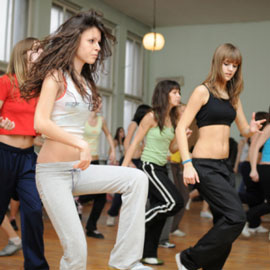 For sustained weight loss surgery results, do you prefer to run or dance to stay fit?
For sustained weight loss surgery results, do you prefer to run or dance to stay fit?
After weight loss surgery, patients have to work hard to sustain weight loss by engaging in daily exercise. Keeping up with fitness on a regular basis is a challenge within itself, but the hardest part is often deciding which type of physical activity is best for you. Some weight loss surgery patients may prefer traditional methods of fitness such as jogging or running while others may enjoy more exciting physical activities like trampoline fitness or Zumba.
Running and Zumba are both excellent forms of physical fitness, but let’s take a closer at the benefits of each!
What running can do for you…
Though running is a more traditional form of physical fitness, it still remains an excellent form of cardiovascular activity that helps burn many calories. Some weight loss surgery patients may have difficulty running after surgery, but in time, running-associated aches and pains may subside as more weight is lost. If joint pain is still present even after you’ve reached your weight loss goal, that’s okay. There are plenty of additional forms of cardio besides running for you to enjoy.
While going for a run might feel like a stretch right now, there are plenty of people who have run marathons after surgery for weight loss. Give it time and work towards your goal gradually and you can likely benefit from this intense form of activity, too. Half an hour of running at a steady pace for a 200 pound person can burn up to 454 calories. Even just ten minutes of running at a steady pace for a 200 pound person can burn up to 151 calories—so every little bit counts.
As with any form of physical fitness, running can improve your overall health by boosting your immune system and decreasing your risk of disease and health complications such as blood clots and high cholesterol.
What Zumba can do for you…
Much like running, Zumba is an excellent form of cardio exercise that helps people lose weight and stay in shape after weight loss surgery. For those unfamiliar with Zumba, it’s considered a Latin-inspired form of dance-fitness that brings fun, excitement and calorie-burning results to an otherwise humdrum physical fitness session. If you’re looking for a more exciting way to stay in shape after weight loss surgery and are able to participate in high-energy classes, Zumba may be for you. Classes are easy to follow and the routines are matched to a variety of hit-list songs infused with Latin beats.
Just one hour at a Zumba class can help you burn up to 400 calories—and like running, the more you put into your workout the more you will get out. Zumba is great for those who have a hard time sticking to fitness routines that can quickly become monotonous as the moves and music are always changing. Zumba, like any dance fitness class, is also great for weight loss surgery patients who do have difficulty exercising due to joint and bone pain. Dancing is an excellent low-impact exercise, unlike running, that can actually help relieve pressure on joints as you work to strengthen them.
Zumba classes are sure to improve your heart health as the movements are fast and the intensity levels fluctuate. A Zumba workout really works almost every muscle in your body as you’re constantly learning and performing funky new dance moves.
Like any fitness class, Zumba is a great place to meet new people or even bring fellow weight loss surgery patients along with you to have some fun as you lose weight and get in shape. Though you can bring anyone along with you on a run as well, there’s something a little more enthusiastic about learning a high-energy new dance routine that helps keep you motivated and inspired to lose weight.
So which is better: running or Zumba?
There’s actually no right answer to this question—it all depends on your personal preference and what you think works best for your individual case. Both exercises will help you lose weight and stay in shape after weight loss surgery, but both incorporate very different approaches to physical fitness. If you’re still unsure, try them both out to see which form of exercise you like best. If you already have, tell us in the comments below which one works best for you. Make sure to always consult your weight loss surgeon in Dallas before engaging in any new form of physical activity.


